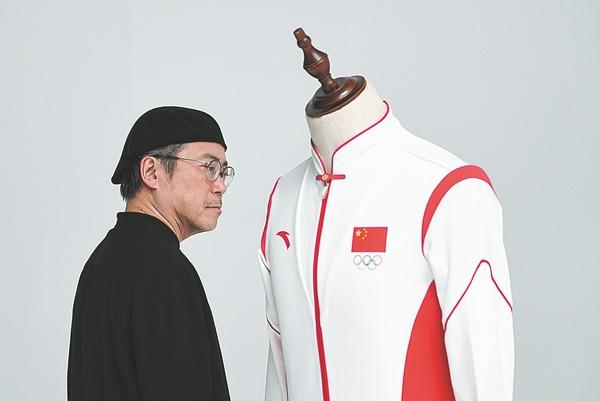 Timmy Yip Kam-tim, podium uniform designer of the Chinese sports delegation for the Tokyo Olympics. (PHOTO / CHINA DAILY)
Timmy Yip Kam-tim, podium uniform designer of the Chinese sports delegation for the Tokyo Olympics. (PHOTO / CHINA DAILY)
The podium uniform for the Chinese sports delegation for the Tokyo Olympics was officially released in Beijing on June 25.
The designer, Timmy Yip Kam-tim, 53, is an artist from Hong Kong and well known internationally as a costume designer, visual artist, art director who won a "Best Art Design" Oscar award with the film Crouching Tiger, Hidden Dragon.
As an artist who was born in Hong Kong studied in Europe, and developed his artistic career in Taiwan before coming to Beijing, Yip's personal experience and diverse cultural background have given him a broader perspective to deliver a Chinese voice to the world.
After making sportswear, I realized that not everyone can reach the limits of sports, but a piece of good sportswear can expand the limits of people.
Timmy Yip Kam-tim, designer
It's Yip's second time contributing to the Olympic Games.
ALSO READ: For Tokyo 2020 ticketholders, an Olympic dream gets dashed
In 2004 he was costume designer for the Chinese performance group at the closing ceremony of the Athens Olympics.
Invited by Anta, one of the leading sportswear brands in China, Yip spent nearly four years creating the Tokyo podium uniform.
He made the garment to fit the body structure of Chinese athletes, and at the same time, he has expressed the spirit of the Chinese people.
Yip, who showed up at the launch event wearing a black beret, reveals that he thought about how China should express itself and how Chinese people should present their bodies during designing.
He has done a lot of research on previous podium uniforms and learnt about related standards. For example, it should reflect the characteristics of the nation, but when athletes from different countries stand on the podium together, no uniform should be too eye-catching to distract people from the athleticism and seriousness of the sport itself.
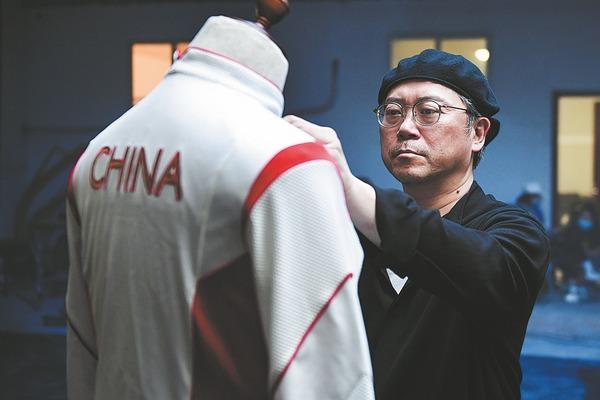 Timmy Yip Kam-tim made the garment to fit the body structure of Chinese athletes, and at the same time, he has expressed the spirit of the Chinese people. (PHOTO / CHINA DAILY)
Timmy Yip Kam-tim made the garment to fit the body structure of Chinese athletes, and at the same time, he has expressed the spirit of the Chinese people. (PHOTO / CHINA DAILY)
"After making sportswear, I realized that not everyone can reach the limits of sports, but a piece of good sportswear can expand the limits of people," says Yip.
Yip wanted to give the world a new vision of Chinese culture through the costumes.
He didn't want to use specific, symbolic elements like the dragon, the Great Wall or panda to frame the image of China.
Instead, he added the Tang-style round stand collar to the uniform.
The line of the collar goes all the way to the elixir field, referring to the Chinese system of deep breathing exercises, sinking breath to the lower belly to gather qi together. The design fits in different occasions, and it adds artistic charm to the athletes.
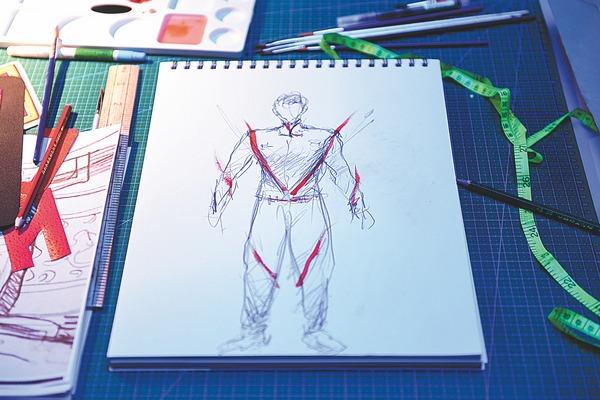 Timmy Yip Kam-tim made the garment to fit the body structure of Chinese athletes, and at the same time, he has expressed the spirit of the Chinese people. (PHOTO / CHINA DAILY)
Timmy Yip Kam-tim made the garment to fit the body structure of Chinese athletes, and at the same time, he has expressed the spirit of the Chinese people. (PHOTO / CHINA DAILY)
Besides, Yip designed the uniform emphasizing the contours of the shoulders with an oversized design, and the visual impact is strengthened while the waist curve is handled with slim-cut design; the upper body is shaped into an inverted triangle, weakening the line of the legs. The overall look is polite and dignified.
Yip thinks that these two colors reveal two sides of Chinese people: red represents enthusiasm, sincereness, positive attitude and concentration; white, which is like the blank space in Chinese landscape painting, brings a sense of inclusiveness and infinite
"As a designer, I need to see 'the rhythm of the movement': how fast or slow does a piece of fabric float, how heavy is it? I have to be very familiar with all this," Yip says.
In the choice of fabrics and materials for the podium uniform, the design team took care of the body parts which are most prone to sweat with breathable fabrics; stitched a wide variety of fabrics with different thickness to free the movement of the body.
Yip reveals that they made over 10 samples till they settled with one.
"I'm grateful that Anta worked with me with full heart to meet the many of my 'harsh' demands. They spent time and made much effort, together we made improvement little by little, and finally we created the design that is both functional and comfortable," he says.
For the color combination of the uniform, Yip chose to use a large area of pure white with Chinese red as decoration.
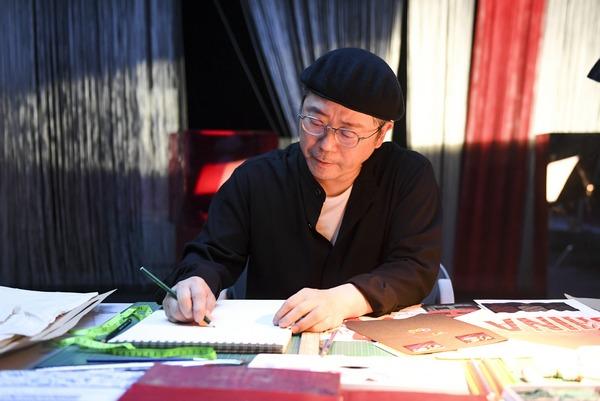 Timmy Yip Kam-tim made the garment to fit the body structure of Chinese athletes, and at the same time, he has expressed the spirit of the Chinese people. (PHOTO / CHINA DAILY)
Timmy Yip Kam-tim made the garment to fit the body structure of Chinese athletes, and at the same time, he has expressed the spirit of the Chinese people. (PHOTO / CHINA DAILY)
He claims,"The colors themselves are emotionless, but through visual communication, they create a classical balance together, like yang and yin, solid and void."
Yip thinks that these two colors reveal two sides of Chinese people: red represents enthusiasm, sincereness, positive attitude and concentration; white, which is like the blank space in Chinese landscape painting, brings a sense of inclusiveness and infinite.
"Such contradictoriness only belongs to Chinese," he says, "and I wish athletes will not be limited by label, become their better selves freely."
READ MORE: Olympic fan's world record dream shattered by spectator ban
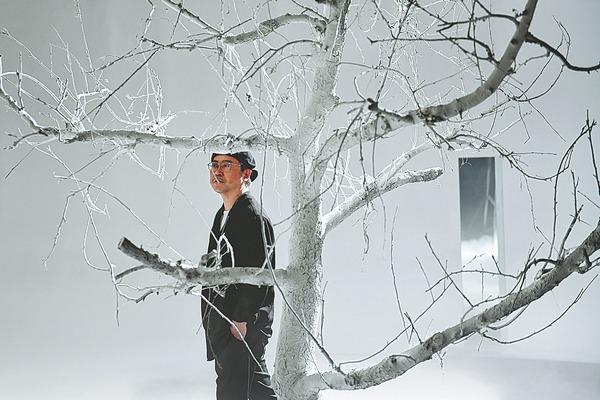 Timmy Yip Kam-tim made the garment to fit the body structure of Chinese athletes, and at the same time, he has expressed the spirit of the Chinese people. (PHOTO / CHINA DAILY)
Timmy Yip Kam-tim made the garment to fit the body structure of Chinese athletes, and at the same time, he has expressed the spirit of the Chinese people. (PHOTO / CHINA DAILY)
The design received much applause and praise at the scene.
"I feel good about the new Team China uniform. The design is creative. It looks really good, and the details really impressed me," Zhao Shuai, a Chinese taekwondo star, says,"I hope to wear this great uniform to stand on the highest podium at the Tokyo Olympics."
Artistic gymnast Xiao Ruoteng comments, "the design is different from previous editions. Also, it integrates a lot of elements from traditional Chinese culture."
The 40-year-old boxer Zou Shiming, who won light flyweight golds at the 2008 Beijing and 2012 London Games, says, "the design and quality of the Team China uniforms are improving year after year."
"All along China has been influenced by foreign cultures, but in fact, we need to relearn our culture and go back to our root to find our central axis. At that time, we no longer have to distinguish between the West or the East, we just need to make our own way and we will find our future," Yip says.
Contact the writer at xuhaoyu@chinadaily.com.cn


